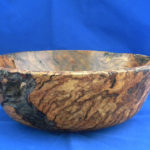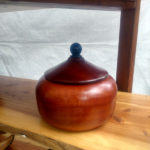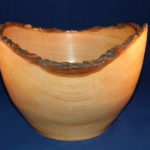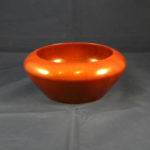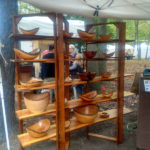Thomas Cambria
Tom Cambria Woodturning
Forked River, NJ
I was introduced to wood-turning by my father-in-law, Robert W. (Bob) Broschart (Dad,) in 1995. Dad soon became my master, mentor, and inspiration. Since Dad was a “leftie,” it was easiest for him to teach me to turn left-handed. Also, since Dad was a master of natural edge bowl turning, it was only natural that I should learn those techniques. I developed proficiency in turning natural edge bowls before even attempting spindle turning. I completed two “NJ Folk-Art Apprenticeships”, with Dad as my master, to learn the techniques for turning “blocks” and “molds” for glass-workers.
I have worked various festivals and juried craft exhibitions assisting Dad. As I became more proficient, I began demonstrating natural-edge bowl turning at these venues. For many years, I have assisted Bob Broschart by providing wood-turning demonstrations at the Greenwich Market and Artisan Faire and the WheatonArts Festival of Fine Craft.
I enjoy turning natural-edge bowls from unseasoned (green) wood. My selection of wood is usually based on the availability of recently harvested hardwood. I also turn candy dishes, salt & pepper mills, and other novelties from dry wood.
I believe that trees often have a story to tell. Every year a tree grows, it adds a new layer of wood to its trunks just outside of the previous year’s growth, below the tree’s bark. Each growth ring represents one year in the tree’s life. The age of a tree can be determined by counting growth rings. The width of each growth ring is determined mostly by weather conditions. Wide rings may indicate the tree received abundant rainfall and good growing conditions. Thin rings likely indicate that the tree experienced drought and stressful growing conditions. The process of turning a natural-edge bowl can reveal a great deal about a tree’s life – previous weather conditions, scars from lightning strikes, wildfires, disease, insect damage, or other trauma. When turning, I attempt to preserve some of this “history.” I can turn a “perfect” bowl from a “perfect” tree, but sometimes, the trees that have survived trauma have had more interesting lives and have so much more to tell.

